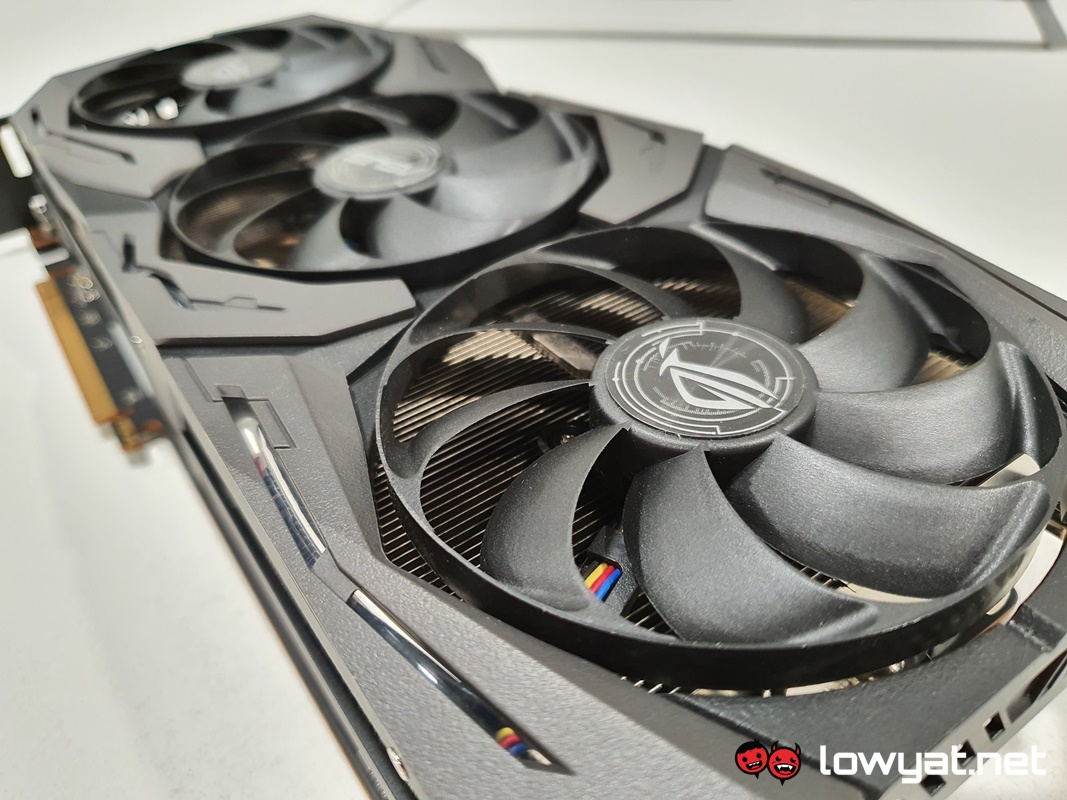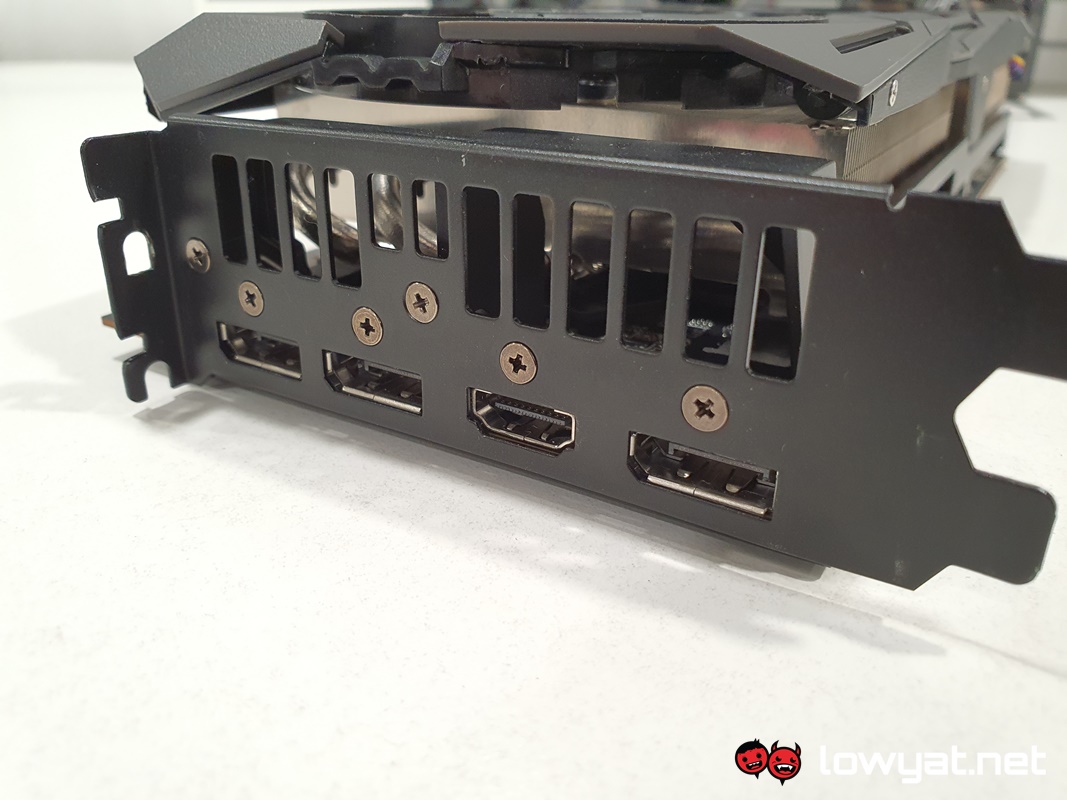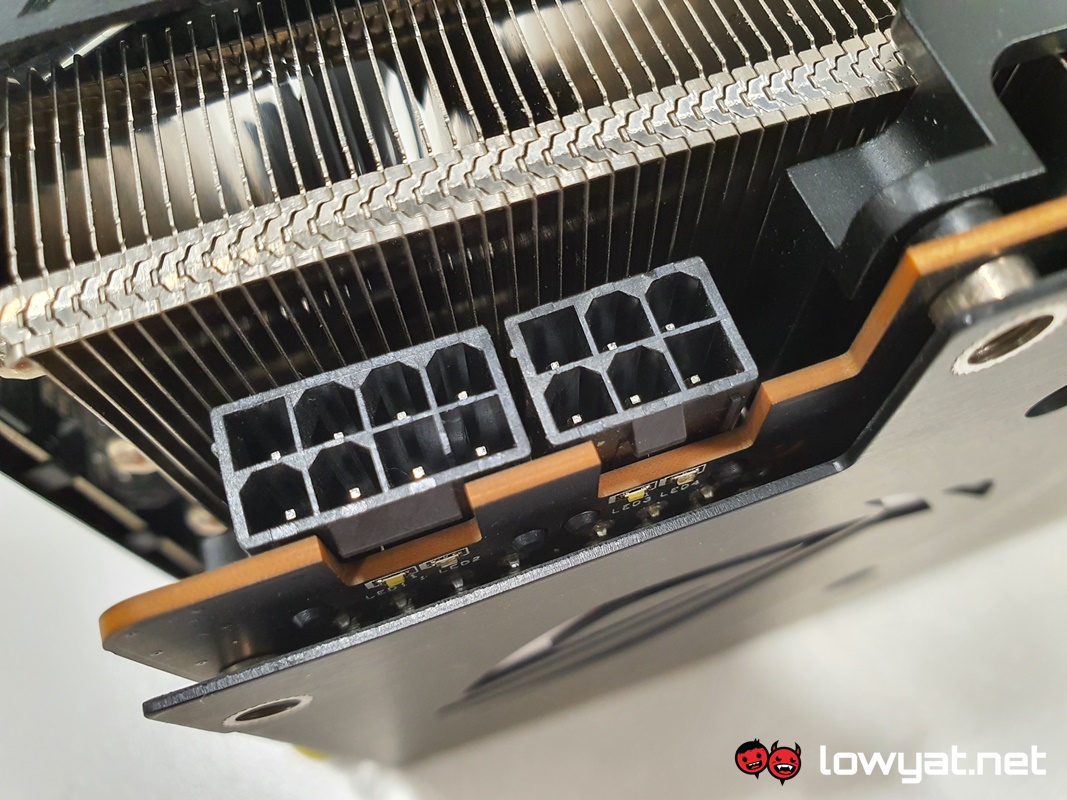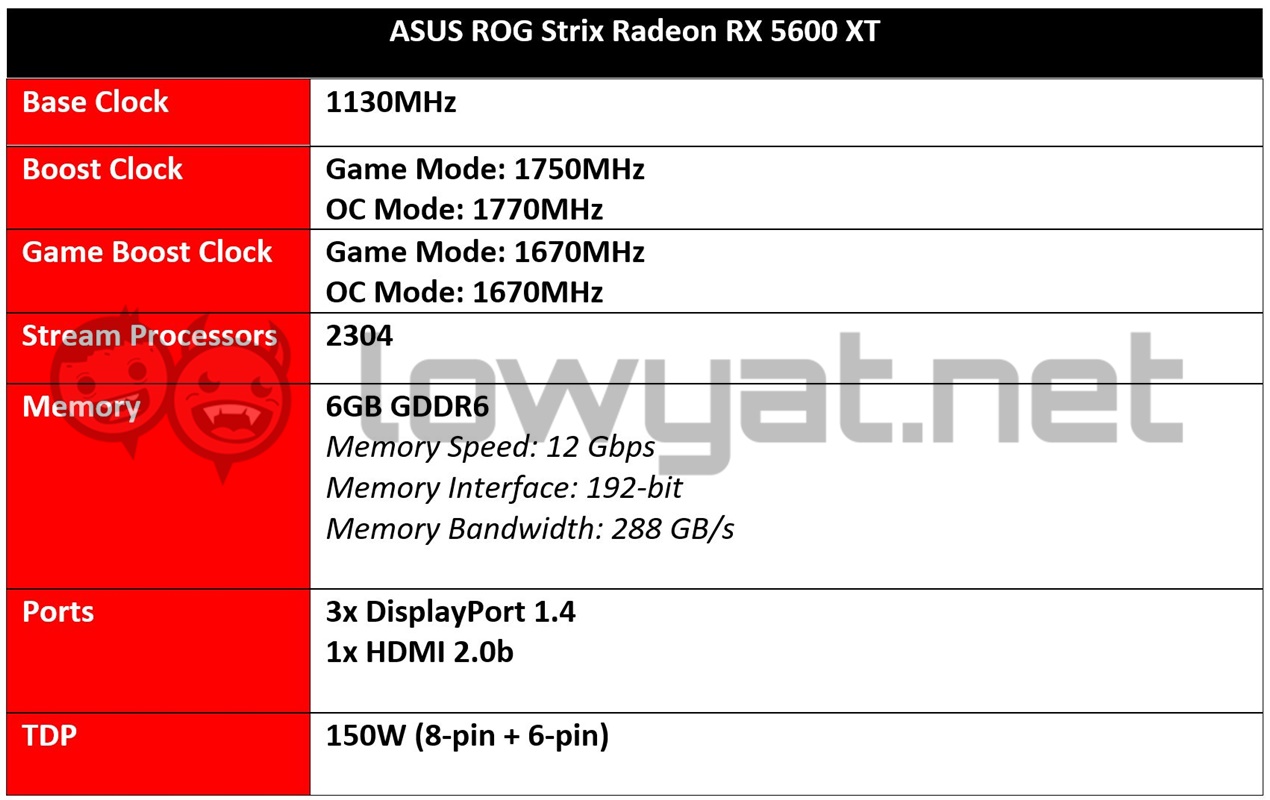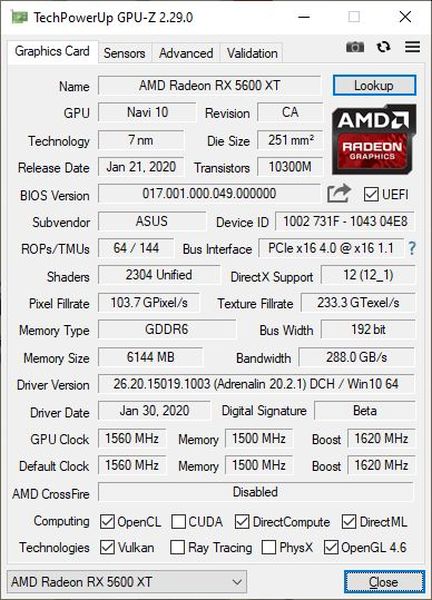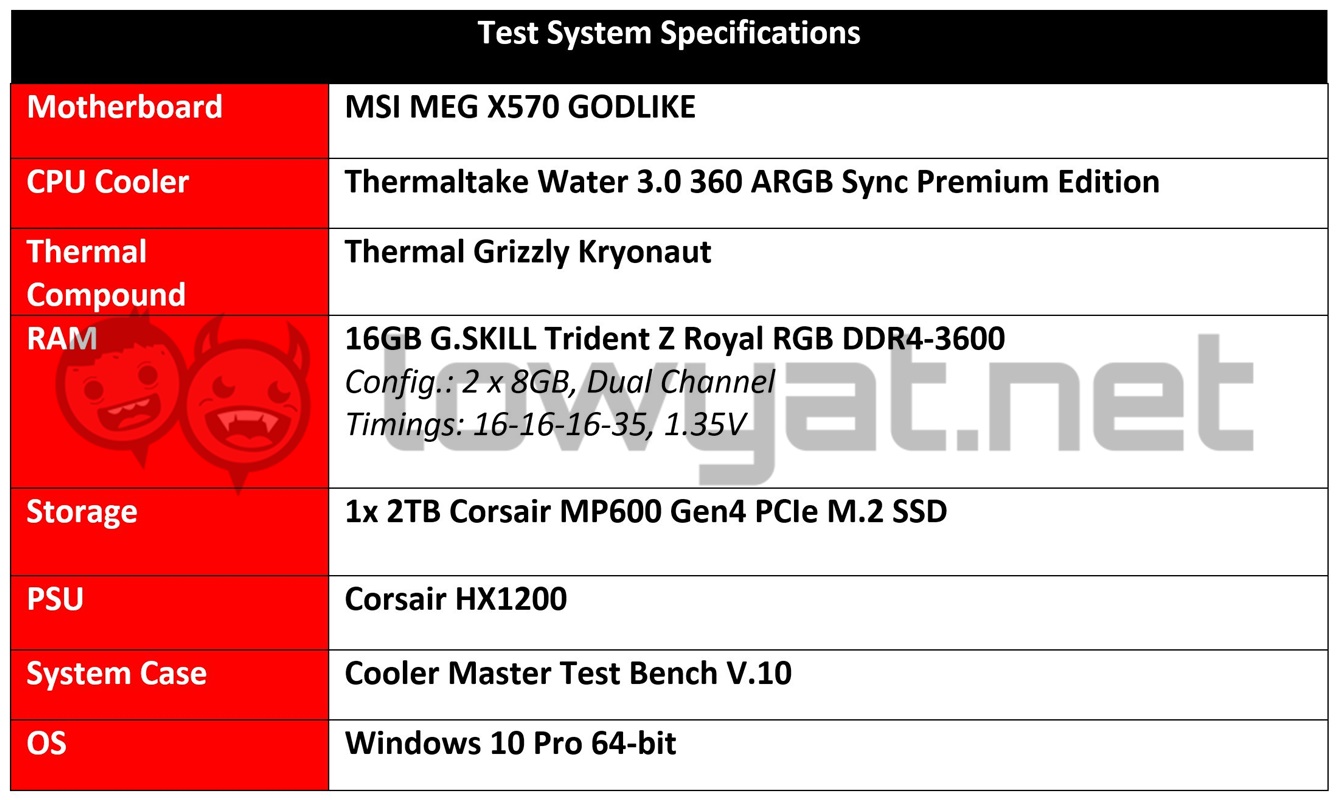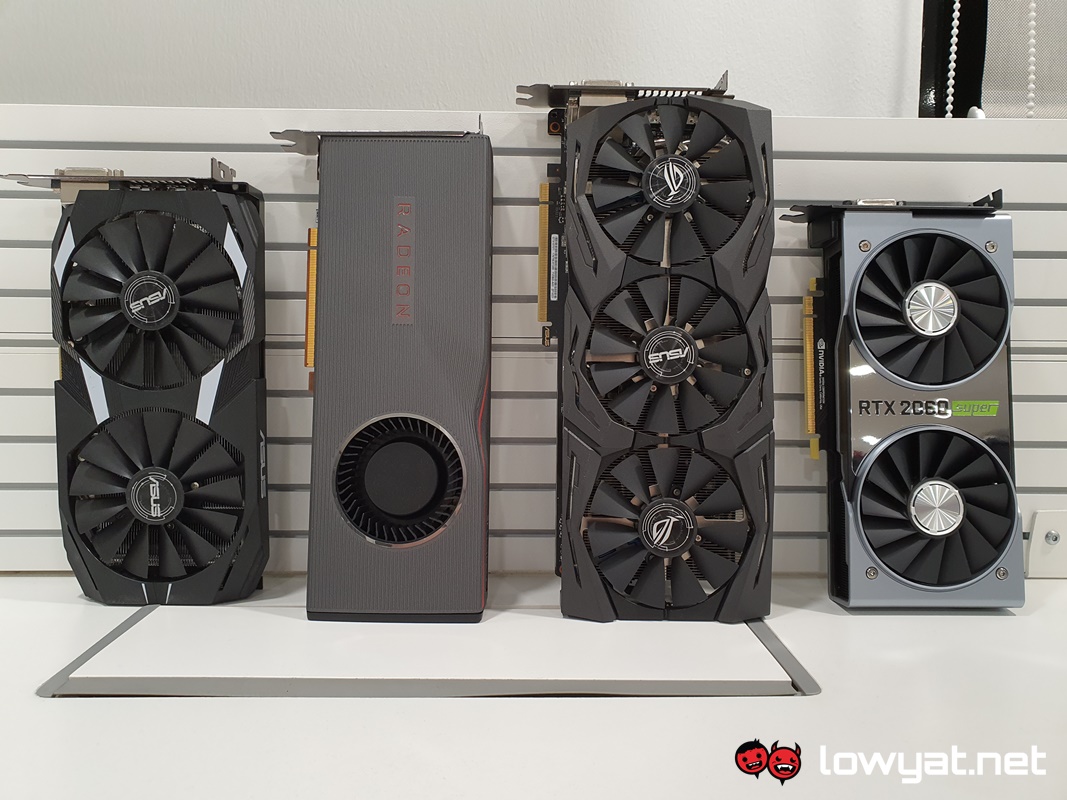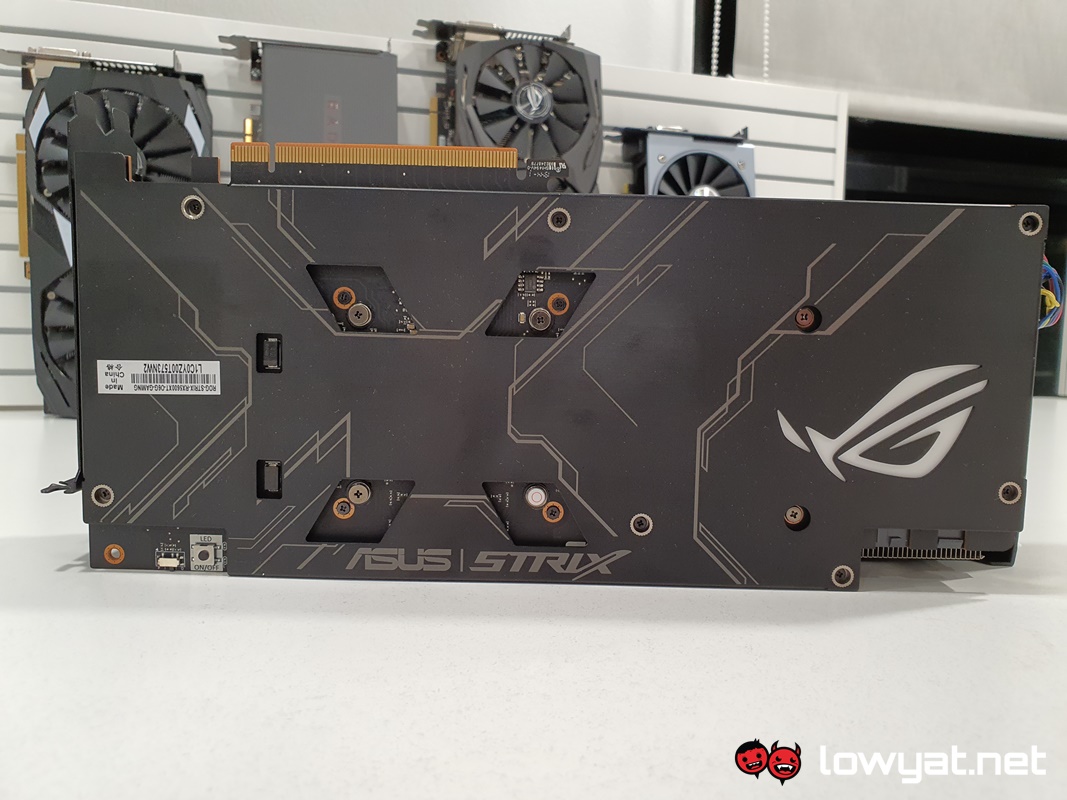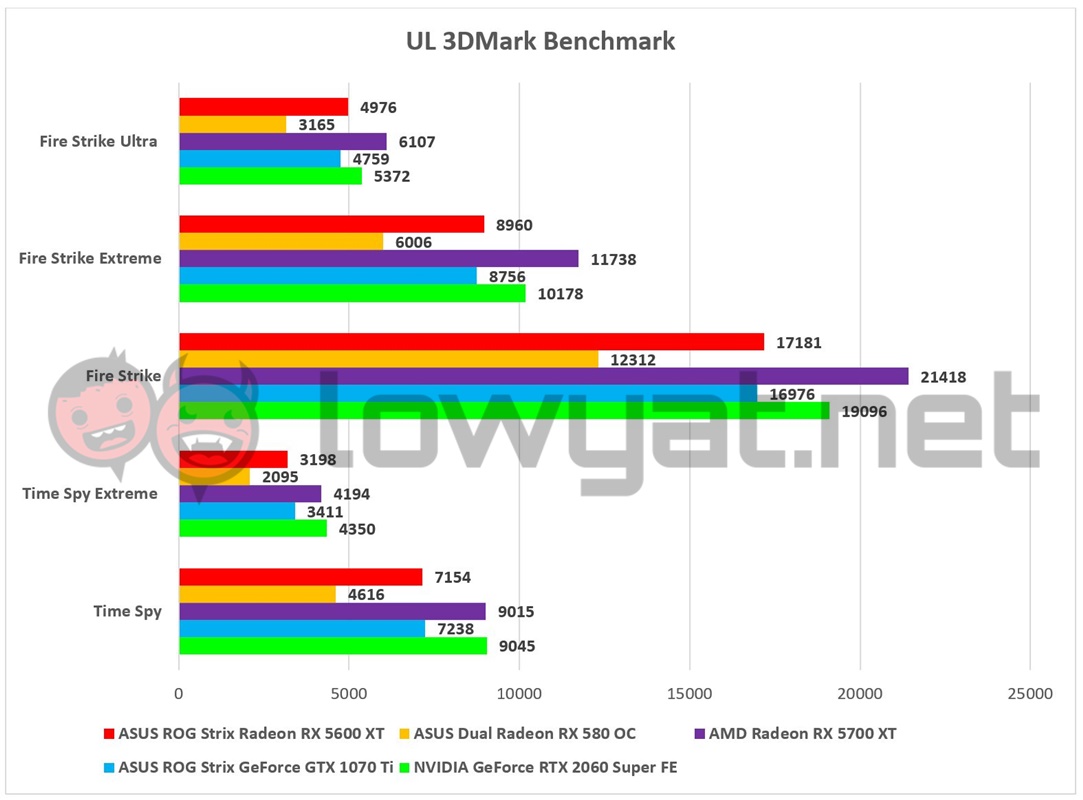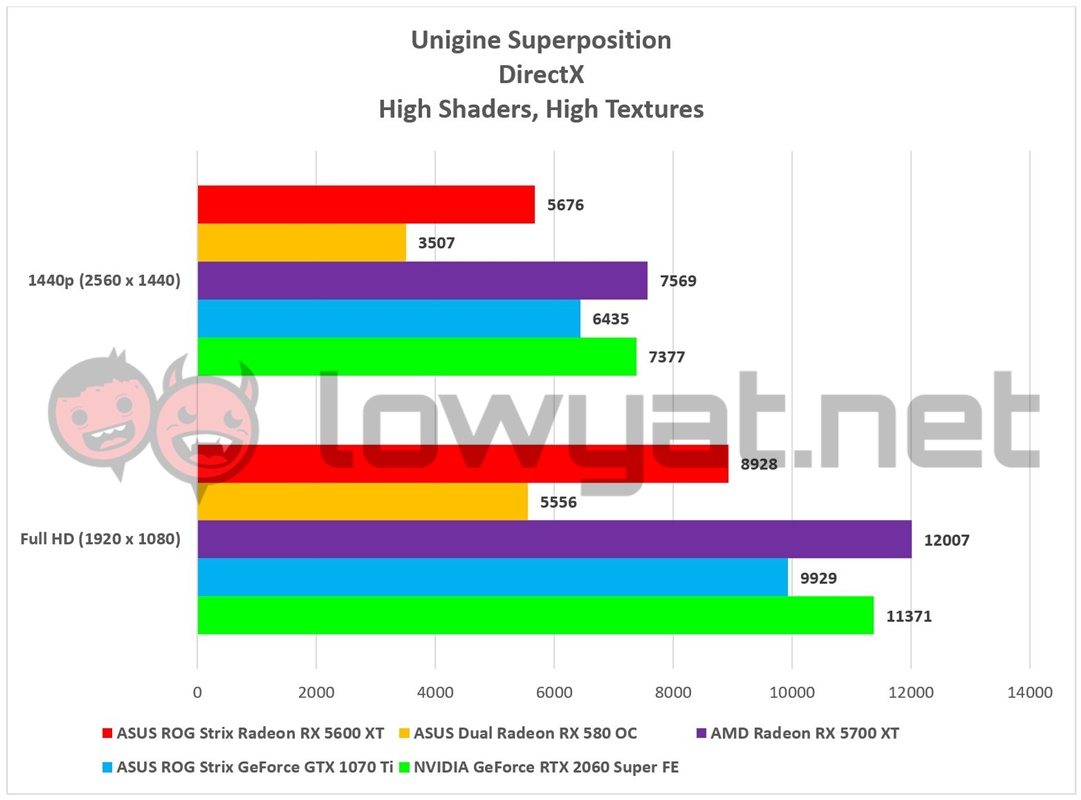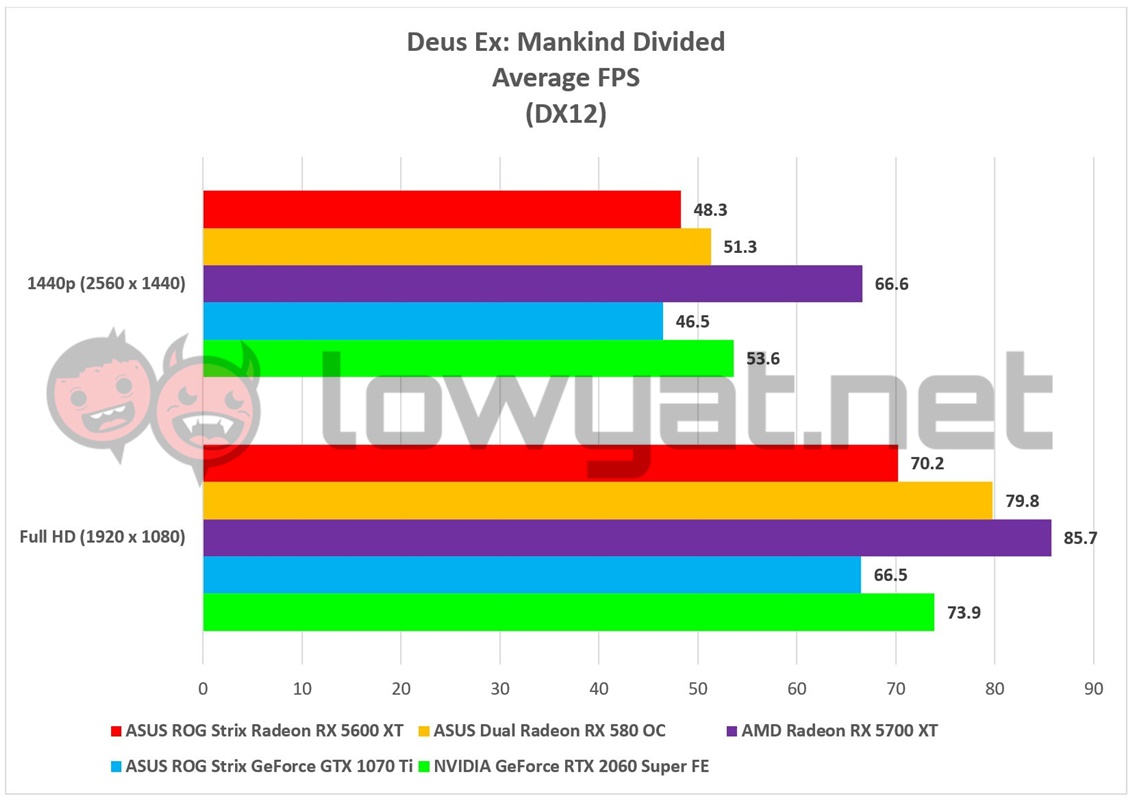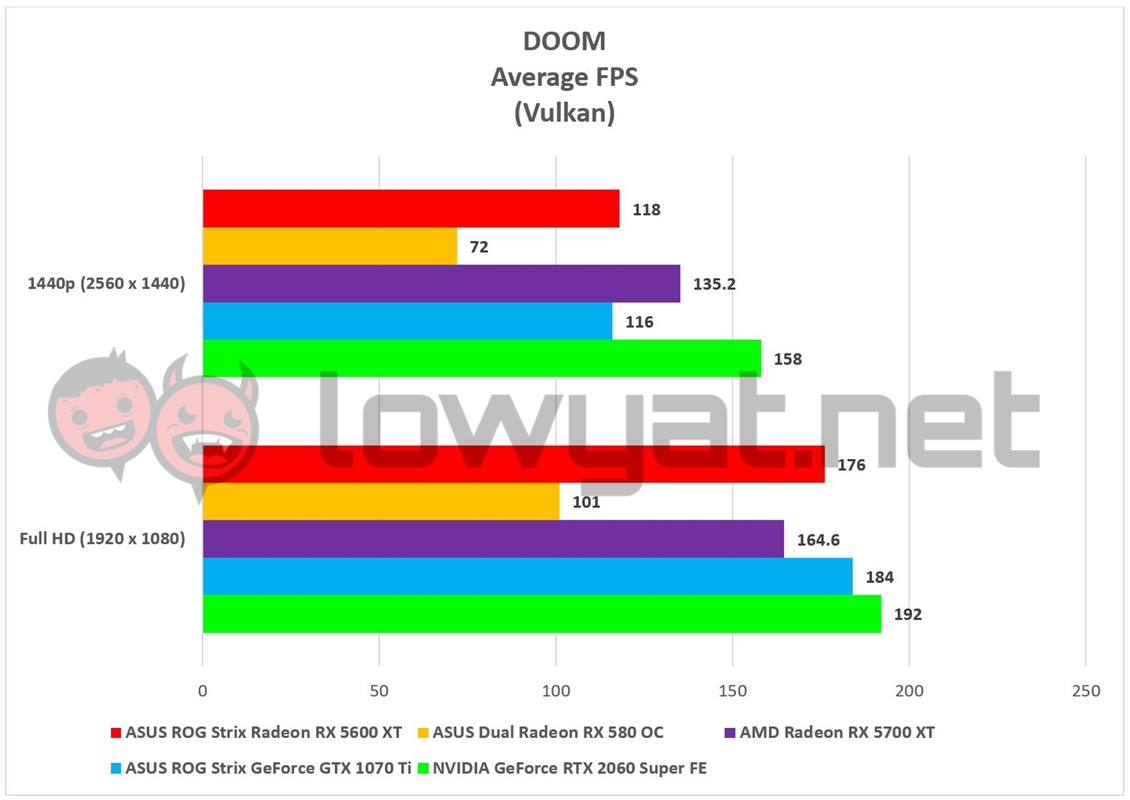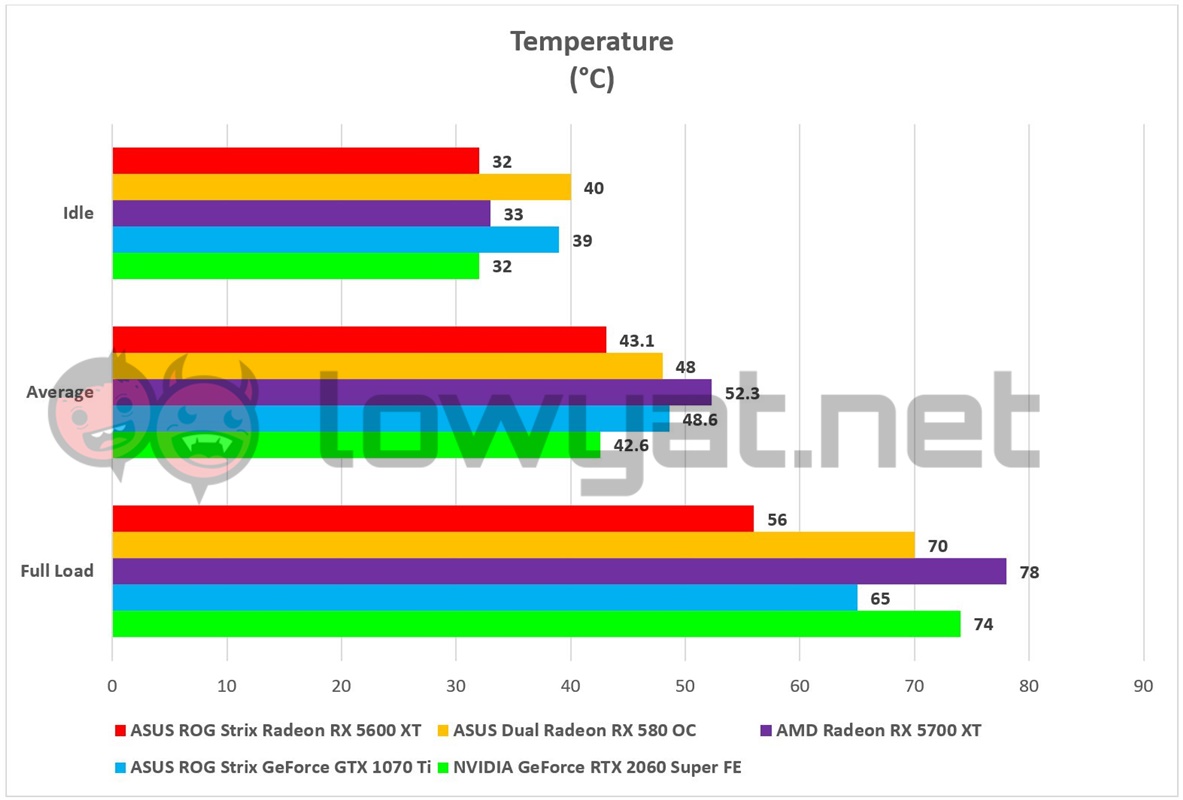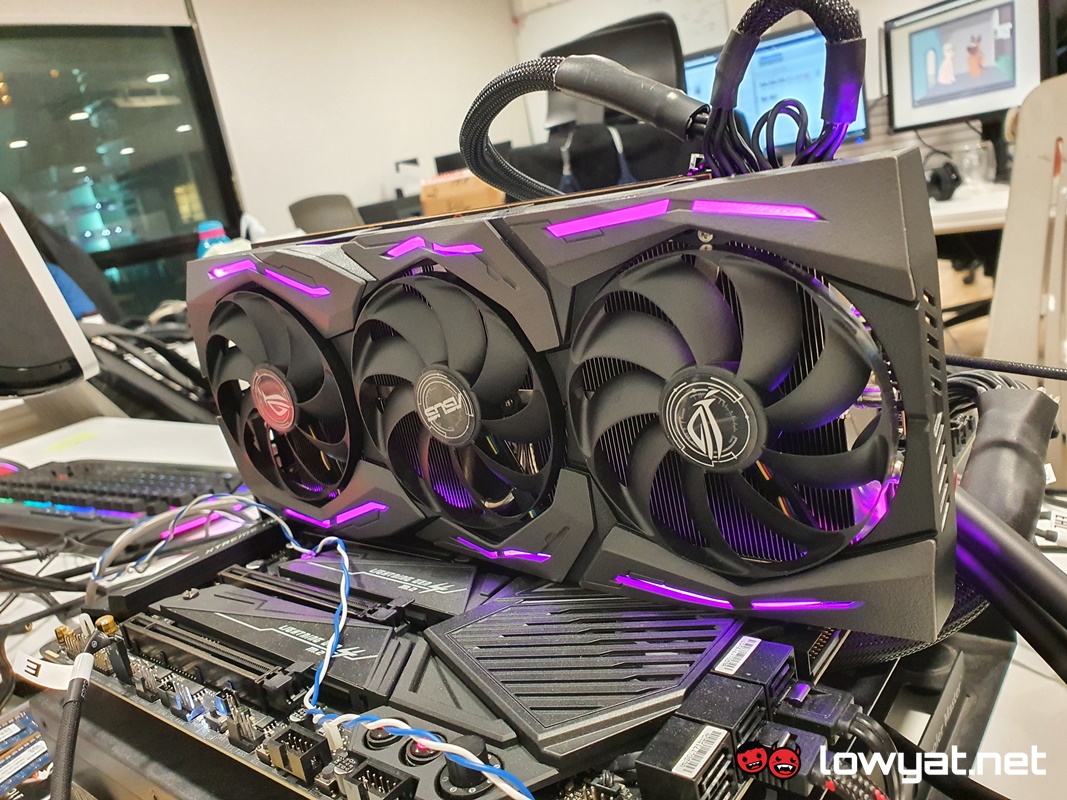In this review, we’ll be taking a look at ASUS’ custom-cooled variation of the GPU, the ROG Strix Radeon RX 5600 XT, and see if the card actually lives up to AMD’s claims.
Design
While I would like to tell you that there is something new and exciting about ASUS’ variation of the RX 5600 XT, this isn’t one of those times. Like all ROG Strix cards, the card rocks ASUS’ triple-fan 0dB cooling solution, all based on its Axial-tech design.
Around the back, the card is reinforced with a backplate, adding that extra bit of rigidity to the card’s overall frame. Like all cards in the Radeon RX 5000 series, the RX 5600 XT uses the PCIe 4.0 interface. Of course, like all graphics cards today, it’s got built-in RGB LEDs by way of ASUS’ Aura Sync.
Specifications
Testbed Specifications
In order to test out the card, the test I use comprises the components in the list below. Further, the CPU that is being used is AMD’s 12-cores, 24-threads Ryzen 9 3900X with Thermaltake’s 360 ARGB Sync Premium Edition 360mm AIO water-cooling solution.
Also, to see how the RX 5600 XT hold up, I’ll be benching the card against several different cards from both AMD and NVIDIA. To specify a further, these include cards using their most current GPU architecture. As well as from a previous generation. With that, the graphics cards I have chosen to pit against the cards are:
ASUS Dual OC Radeon RX 580 OCAMD Radeon RX 5700 XTASUS ROG Strix GeForce GTX 1070 TiNVIDIA GeForce RTX 2060 Super Founders Edition
I’ve thrown the Polaris-based Radeon RX 580 instead of a Vega-powered card for a specific reason. While it has has seen multiple refreshes throughout its lifetime, Polaris was, in essence, AMD’s mid-range solution when it first launched in 2016. Also, it’s a perfect chance to see how the ageing GPU holds up in the last four years. As usual, we use UL’s 3DMark and Unigine’s Superposition benchmarks to test the cards on a synthetic level. For real-world performance, we ran our usual four game titles, Battlefield V (BFV), Deus Ex: Mankind Divided, the 2016 reboot of DOOM, and Shadow of the Tomb Raider. Lastly, I want to point out that I did not perform any overclocking on any of the cards and just ran them at their out-of-the-box state. In order to keep the numbers fair. As for the drivers, I used AMD’s Adrenalin Software 2020 20.2.2 drivers for the Radeon GPUs, while the NVIDIA graphics cards were tested using version 442.19 of its GeForce Game Ready drivers.
Benchmarks
Despite being marketed as a card for the Full HD masses, the RX 5600 XT clearly proves to be far more capable than just that. On the synthetic benchmarks, it outperforms the RX 580 by a significant margin and on par with a Pascal-powered NVIDIA GeForce GTX 1070 Ti. In Unigine’s Superposition test, the story is more or less the same, although the test does paint the RX 5600 XT in a less impressive light when its scores are compared to the RX 5700 XT and the mid-range NVIDIA offerings on the list.
As I mentioned earlier, the RX 5600 XT’s performance genuinely surprised me in the real-world testing (read: gaming) portion. Obviously, the card is incapable of rendering ray-tracing in real-time, but without the feature in the equation, the card still manages to maintain an average framerate of 75 fps on BFV. At 1440p resolution and with the game’s graphics setting set at Ultra.
What is surprising is that the RX 5600 XT actually loses out to the RX 580 in one title: Deus Ex: Mankind Divided. More so because the game itself is tuned to run more optimally with AMD Radeon GPUs. On average, the RX 5600 XT runs at less than 50 fps in 1440p, and while it jumps up to the 70 fps mark in Full HD, it’s still a full nine fps behind the Polaris-powered card.
Moving on, the results from DOOM are not surprising. Honestly, I would be more surprised if the RX 5600 XT wasn’t able to retain an average of 100 fps in both display resolutions. Especially given its Navi pedigree.
Temperatures and Power Consumption
Perhaps the most surprising aspect of the RX 5600 XT is the operating temperature of the card. Throughout the entirety of its testing, its maximum temperature never went past the 60°C mark, not even when I began playing BFV and DOOM back to back for several hours. Of course, I did test the card in an air-conditioned environment and it can be argued that the ambient temperature of the room at the time plays a part in why the component was able to maintain its maximum temperature of 56°C. Even then, the maximum temperature readings of the RX 5600 XT is significantly cooler than the rest of the card. Of course, there’s also ASUS’ triple-fan solution to be considered. In which case, it’s definitely doing a good job at keeping the heat at bay.
Likewise, the overall power consumption of the RX 5600 XT is just as remarkable, with its maximum power draw actually pulling in less power than the other cards when being made to work overtime.
Conclusion
While the card has proven to be more than capable of running game titles at resolutions greater than Full HD, the ASUS ROG Strix Radeon RX 5600 XT doesn’t come cheap at RM1599. For that price, you can also get a non-Super variant of NVIDIA’s GeForce RTX 2060, or a GTX 1660 Super if you’re looking to save additional hundreds of ringgits. As a mid-range card, though, the Radeon RX 5600 XT most certainly ticks off the right boxes for a graphics card, and this ASUS ROG Strix variant certainly makes a compelling case for gamers looking for an alternative to NVIDIA’s mid-range offering.
